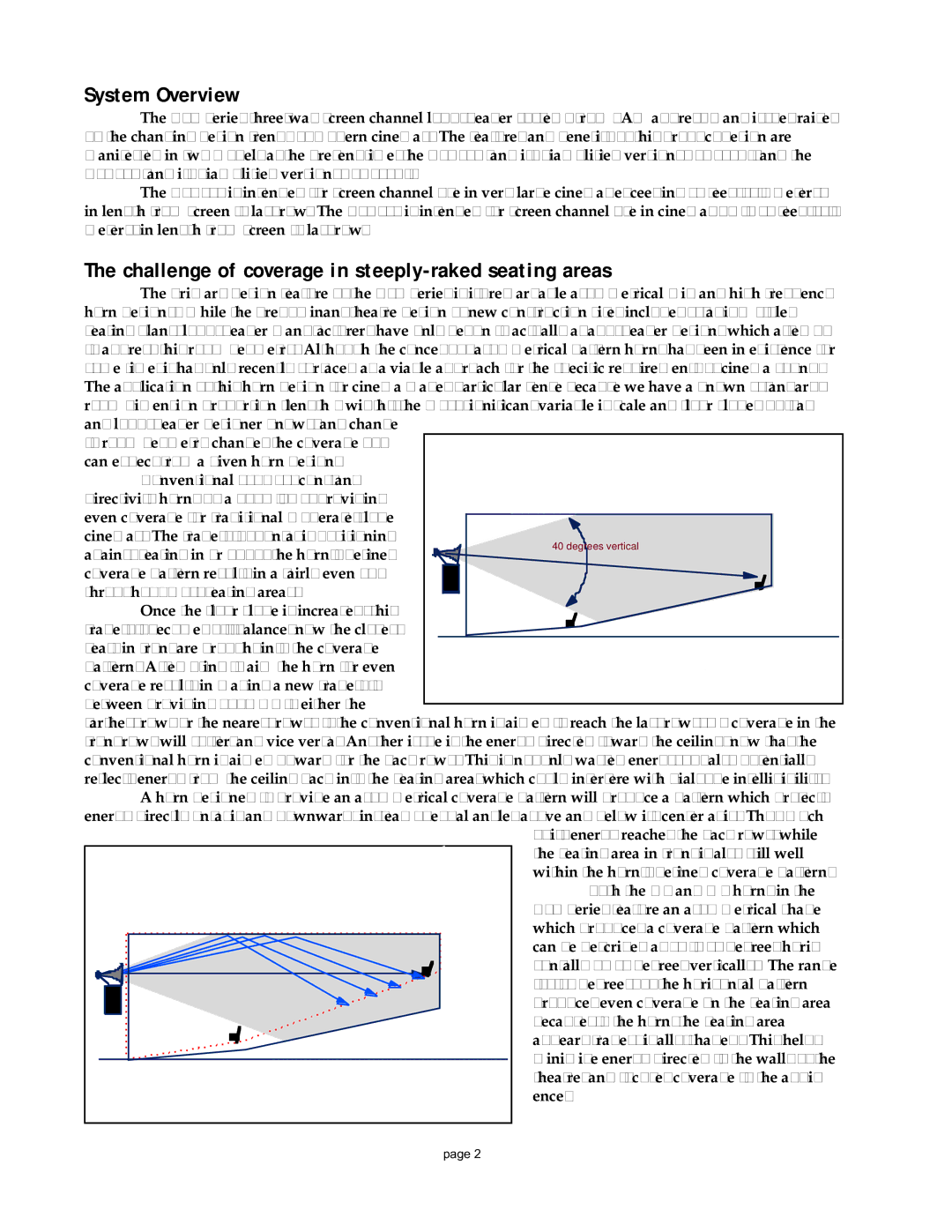
System Overview
The CSC Series
The CSC923 is intended for screen channel use in very large cinemas exceeding 90 feet (27.4 meters) in length from screen to last row. The CSC723 is intended for screen channel use in cinemas up to 90 feet (27.4 meters) in length from screen to last row.
The challenge of coverage in steeply-raked seating areas
The primary design feature of the CSC Series is its remarkable asymmetrical mid and high frequency horn designs. While the predominant theatre design of new construction sites includes “stadium style” seating plans, loudspeaker manufacturers have only begun to actually adapt speaker designs which attempt to address this room geometry. Although the concept of asymmetrical pattern horns has been in existence for some time, it has only recently surfaced as a viable approach for the specific requirements of cinema sound. The application of this horn design for cinema makes particular sense because we have a known “standard” room dimension proportion (length x width); the most significant variable is scale and floor slope. But, as any loudspeaker designer knows, any change
to room geometry changes the coverage you can expect from a given horn design.
Conventional 90º x 40º constant directivity horns do a good job of providing
even coverage for traditional
coverage pattern results in a fairly even SPL throughout most seating areas.
Once the floor slope is increased, this
pattern. Attempting to aim the horn for even coverage results in making a new
farthest rows or the nearest rows. If the conventional horn is aimed to reach the last rows, HF coverage in the front rows will suffer, and vice versa. Another issue is the energy directed toward the ceiling, now that the conventional horn is aimed upward for the back rows. This is not only wasted energy, but also potentially reflects energy from the ceiling back into the seating area, which could interfere with dialogue intelligibility.
A horn designed to provide an asymmetrical coverage pattern will produce a pattern which projects energy directly
of its energy reaches the back rows, while the seating area in front is also still well within the horn’s defined coverage pattern.
Both the HF and MF horns in the CSC Series feature an asymmetrical shape which produces a coverage pattern which can be described as 80 to 90 degrees hori-
zontally by 50 degrees vertically. The range
produces even coverage on the seating area
because, to the horn, the seating area
appears
minimize energy directed to the walls of the theatre, and focuses coverage to the audi- ence.
page 2
